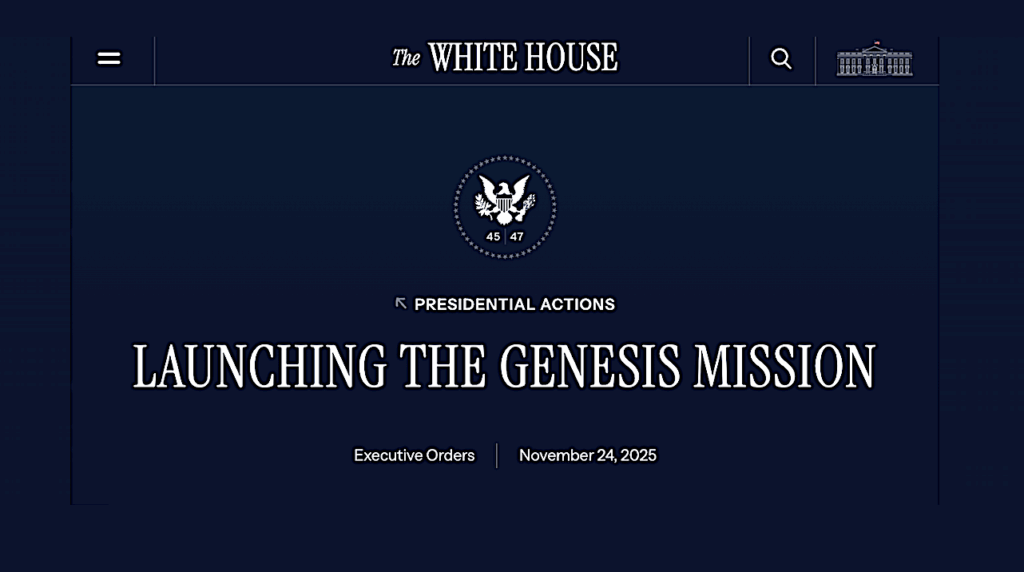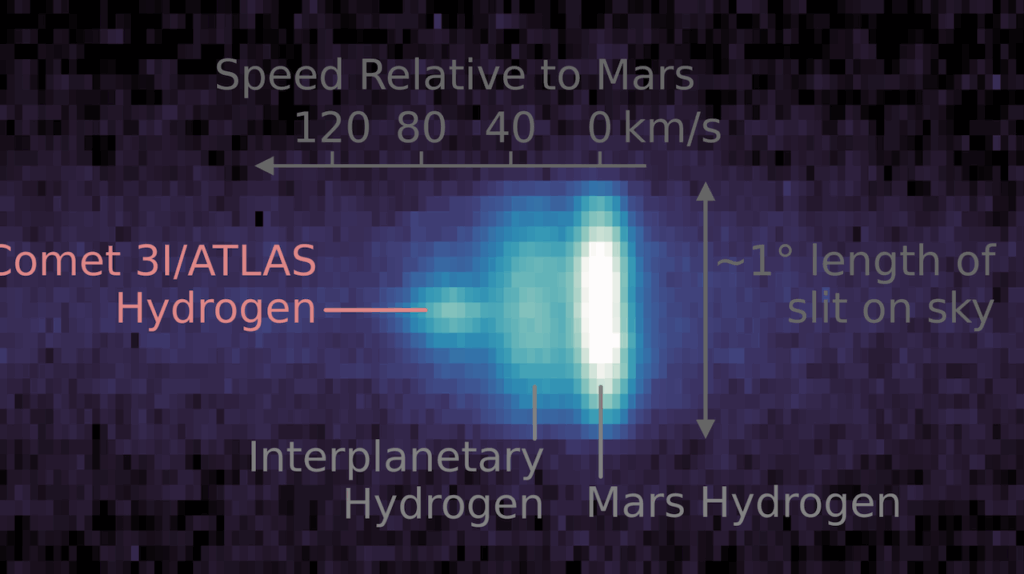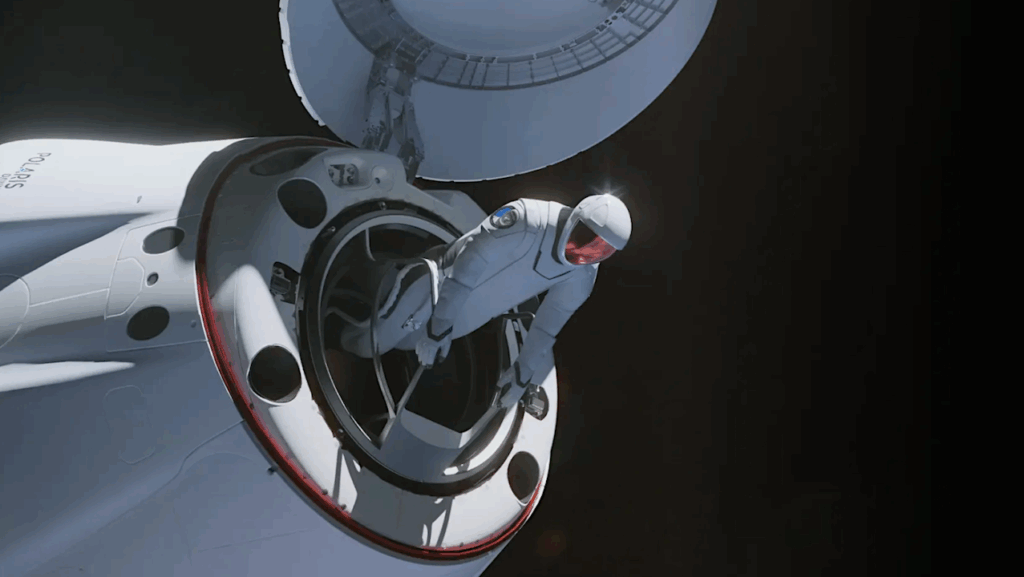Clueless Webb Telescope Advertisement From Northrop Grumman

 Keith’s note: The following full page color advertisement by Northrop Grumman appears on page A5 of today’s Washington Post (larger image).
Keith’s note: The following full page color advertisement by Northrop Grumman appears on page A5 of today’s Washington Post (larger image).
“MAKING HISTORY REQUIRES MISSION SUCCESS.
Northrop Grumman is proud to lead the industry team of NASA’s James Webb Space Telescope – the largest, most complex and powerful space telescope ever built. Webb will fundamentally alter our understanding of the universe, and we are focused on ensuring that this once-unthinkable achievement becomes a reality. Webb pushes the limits of technology. We only get one chance to get it right – and we take that responsibility seriously. From putting men on the moon to seeing he first images from Hubble, there are many great firsts in space. When Webb travels one million miles from Earth and peers back over 13.5 billion years to see the first stars and galaxies forming out of the darkness of the early universe, we will marvel at its discoveries and write the next chapter of great firsts in space. Making history requires mission success and we are all in.”
Yea, Northrop Grumman is “all in” on this. Non-stop cost increases and schedule delays for 16 years have turned this project into a cash cow for the company. You bet they’re “all in” – even if they can’t seem to attach fasteners properly and don’t read the instructions on what solvents to use to clean hardware. But that’s OK since NASA will just keep paying those invoices.
Advertisements like this in the Washington Post like this can easily cost between $100,000 to $200,000. At a minimum you’d hope that the money for ads (which should be spent on fixing Northrop Grumman’s dumb mistakes) would at least be used for public commentary that is a little more honest about the situation. Instead, you see no mention of any of these screw ups or obscene cost increases – problems that are so bad that Congress now has to reauthorize this project.
Northrop Grumman just wants you to know that “mission success” is important. Duh. I am not certain they care so long as they get paid. This is not how America is going to do that whole leadership-in-space thing. If this is an example of how we do that leadership thing we won’t be able to afford to lead the way.
More Cost Increases And Delays For Webb Space Telescope
“As a result of the delay, Webb’s total lifecycle cost to support the March 202l launch date is estimated at $9.66 billion. The development cost estimate to support the new launch date is $8.8B (up from the $8B development cost estimate established in 2011).”
NASA Announces Contract for Next-Generation Space Telescope Named after Space Pioneer (2002)
“The James Webb Space Telescope is scheduled for launch in 2010 aboard an expendable launch vehicle. NASA today selected TRW, Redondo Beach, Calif. [Bought by Northrop Grumman 2 months earlier], to build a next-generation successor to the Hubble Space Telescope in honor of the man who led NASA in the early days of the fledgling aerospace agency. Under the terms of the contract valued at $824.8 million, TRW will design and fabricate the observatory’s primary mirror and spacecraft. TRW also will be responsible for integrating the science instrument module into the spacecraft as well as performing the pre-flight testing and on-orbit checkout of the observatory.”








“The Webb telescope was conceived by the astronomy community in the late 1990s as a more modest project with a smaller mirror for about $500 million. Then-NASA chief Daniel Goldin challenged the science community in a major speech to double the capability of the telescope for the same price.
Dressler, who was in the audience when Goldin gave the speech, recalled: “It astonished everybody. It made no sense that you could build a telescope six times larger than Hubble … and have it come in cheaper. We were so stunned, we didn’t know what to do.”
http://articles.latimes.com…
Recall that most of the cost of the Hubble was due to the delays, including the Shuttles being grounded after the Challenger accident. So this statement is basically admitting they would not be able to do it on schedule or budget and someone misled Congress on it.
The JWST is now projected to cost about 66 cents per year since the beginning of time!
Look at the bright side. Paying one person, even at the minimum rage, for all the years since the big bang, would cost about twenty times more than JWST.
Typo or social commentary?
I usually correct typos when I find out about them.
Meanwhile, someone at NASA appears to have recognized the potential of the BFR is deploying a bigger and better version….
https://www.teslarati.com/n…
NASA funds study on SpaceX BFR as option for massive space telescope launch
By Eric Ralph
Posted on July 9, 2018
“Speaking at the Exoplanets II conference in Cambridge, UK July 6th,
geophysicist and exoplanet hunter Dr. Debra Fischer briefly revealed
that NASA had funded a study that would examine SpaceX’s next-gen BFR rocket as an option for launching LUVOIR, a massive space telescope expected to take the reigns of exoplanet research in the 2030s.
Conceptualized to follow in the footsteps of NASA’s current space
telescope expertise and (hopefully) to learn from the many various
mistakes made by their contractors, the LUVOIR (shorthand for Large
UV/Optical/IR Surveyor) concept is currently grouped into two different categories, A and B. A is a full-scale, uncompromised telescope with an unfathomably vast 15-meter primary mirror and a sunshade with an area anywhere from 5000 to 20000 square meters (1-4 acres). B is a comparatively watered-down take on the broadband surveyor telescope, with a much smaller 8-meter primary mirror, likely accompanied by a similarly reduced sunshade (and price tag, presumably).”
Gotta love the spirit! JWST is just one Congressional vote from being cancelled due to massive schedule delays and cost over runs and here they are pushing for something much bigger. At least using the BFR means there will be astronauts around to fix any problems during deployment.
I like the idea, but I’m going to wait for the results of the study before I get too excited. Will BFR have any EVA capabilities? It could, but so far SpaceX has described it as point-to-point transportation. They haven’t said anything about people going outside along the way. (This would be quite easy if it were part of the initial design, but less easy to add at a later date.) Will a version of LUVOIR designed for a BFR launch be designed for astronaut-assisted deployment? Note that Galileo was launched on the Shuttle and the Shuttle was capable of supporting EVA work. But Galileo’s high gain antenna was not opened until after it left Earth orbit (or, more properly, they did not try and fail to open it, until it was on its way and beyond the reach of astronaut assistance.) The possibility you describe is there, but the actual LUVOIR observatory may not be designed to take advantage of that possibility.
The “Doctor Evil” version of the BFS with the clamshell nose hatch will most likely to be unmanned without any provisions for crew.
However if crew EVA is needed to unfurled a spacecraft. Just buy a companion crewed BFS flight with a modular internal airlock.
There will be some sort of EVA capability for the BFS with crew. There are contingencies for personnel and cargo transfer between vehicles plus the requirement to examined and repair damages to vehicle exterior.
Have to point out that people will be getting off the BFS to the surface of the Moon, Mars and other places. So there will be EVA capabilities along with means to get people down to the surface from the cargo/egress hatchs.
The EVA capabilities are not at all clear to me. Yes, on they certainly expect people to get out on the surface of the Moon or Mars. But a surface EVA is very different from one in free space. All sorts of things on the outside of the spacecraft (rails, brackets, etc.) help to keep the astronaut in place when he tries to pull on a stuck part. That sort of thing isn’t aerodynamic, and might not have a place on BFR.
True, but that was also the case with the Shuttle Orbiter. They solved it by doing all the work in the cargo bay or on the extendable arm. They might go for a similar solution with the BFR, especially as the BFR is suppose to have a cargo bay eight times as large. But it depends on the decisions that will be made in regards to the different versions of BFR.
Good points. I noticed that the image of the upper stage of the BFR is different from the others shown of it. It seems to be a cargo only version with clamshell doors, so it might not accommodate any crew. But it would be good to design it with astronauts in mind. I seem to recall that when Hubble was deployed they had to trouble shoot some problems with the solar panels unfolding.
When there is a problem during deployment it is a crapshoot whether humans would have the time, equipment and access to fix it. If deployment and checkout is at the ISS, where delays can be accomodated, spare parts delivered, and there is minimal overhead cost, that would be viable. If not, I think it is better to use a simpler design that can be launched as close as possible to final configuration, thoroughly test any mechanical activation mechanisms, and to build a series of evolving designs with about one launch per year.
LUVOIR would be at L2. Parking at LEO during deployment is probably not an option, both on the launch energetics and environmental fronts.
LUVOIR is being designed for serviceability, but not in any way linked to the launch vehicle that deploys it. The only link that LUVOIR has to launch vehicle is the fairing size, and the ability to bring mass to L2.
This report is incorrect. The LUVOIR team has explored all launch vehicle options, not just BFR (in fact, we don’t know enough about BFR to say anything conclusive!). NASA is paying for the LUVOIR study, but not a study that is examining BFR for LUVOIR. (I am the Cosmic Origins science team lead for LUVOIR)
Could you be more specific? The story is based on a conference presentation by Debra Fischer and she’s also on the LUVOIR science definition team. Is this a matter of the study covering many options, one of which is BFR, and the reporter just focusing on that one?
Debra is the Co-Chair of the LUVOIR STDT, in fact. I simply believe her mention of the BFR was taken out of context as an example of the kind of launch vehicle we are considering. NASA is not explicitly funding an analysis of BFR for LUVOIR. NASA is funding our mission concept study, and that study is mostly focused on the technology and science drivers of the observatory. Launch vehicles are part of the analysis, but there is no explicit $ going to launch vehicle analysis, which is what the article implies. We have looked at Space-X, ULA, Blue Origin, and NASA/SLS as options for both LUVOIR architectures. Some can lift the mass, but not the volume, others can do both, and some can do neither. For example, SLS Block 2 can lift both LUVOIR architectures, but Falcon Heavy does not currently have the right sized fairing. It’s all a trade space analysis, not a targeted study with one launch provider.
The 8 meter mirror will fit neatly in the BFR’s 9 meter fairing with no need for a complex deployment mechanism. It has my vote.
Slight nit-pick. The internal diameter of the BFS cargo bay is about 8 meters for the cargo variant with the clamshell hatch according to Gwynne Shotwell.
In 39 years in the DC area, I’ve noticed that full-page ads in the first section of the Post almost invariably translate to, “Congress: continue to spend billions of dollars on something high tech that’s years behind schedule and of arguable need.” One of the reasons I’m glad I only read the digital edition now, with an ad blocker.
Should have canceled it in 2010/11, as I believe we chatted about on the comments on this very website.
Should have cancelled it in the late ’90s.
Sigh…Large government contractor misses deadlines, asks for more money and trumpets own ‘successes’ along the way in hopes of Congress not calling them out enough to jeopardize future government contracts.
Honestly, what’s the solution? I’d say to write into every future contract even bigger penalties to companies if they miss reasonable predetermined milestones for a given project. Especially if it’s discovered delays were due to contractor mistakes.
But, how realistic is that to ever happen? Do government contracts already have such penalties? I’m a total layman to how government contracts work, but as a citizen taxpayer, frustrated to see these costs overruns and delays seem to happen on every big ticket item that the government undertakes (NASA, Defense, Public Works, etc..)
The contractors get NASA to sign off on “contract variations” that get around penalty clauses.
I can understand such write-offs if the government entity changed specs, changed a milestone definition or was directly responsible for a delay. Any government project manager that would willingly sign-off on any other contract variations where the contractor was negligent in meeting the milestone, should be held accountable (I know, accountability in government management. What a concept.)
That’s another “seems like…”, but when you dig into it things start to pop out.
For instance: what to do about a little thing like technology development? Nobody ever built a huge expanding mirror with the kind of tolerances needed. And while I don’t know for sure how much of the over run might be associated with the folding thing, the point stands that something like this simply cannot be built on a fixed price when there are aspects that are undeveloped.
Maybe a better way is to separate those issues out into a different contract, if that’s even possible.
On the other hand: yea, it stinks of sloppy management and huge over-runs. But where is the line between legitimacy and, dare I say it, mismanagement?
We should reduce technical risk by flying more spacecraft with each being less of a leap from the one before.
The Webb mirror when it finially deploys is 6.5 meters in diameter. The Falcon heavy fairing is 5.2 meters. The BFR fairing is 9 meters. Most likely the BFR will fly before the Webb, but even if it doesn’t scaling the Webb down slightly to eliminate a complex mechanism deployment mechanism could have simplified the design and reduced cost and technological risk while still getting four times the light of the Hubble, and a followon with a larger mirror could have been designed for the BFR.
Even a 4m mirror under a traditional fairing would be a big jump over HST.
But moreso, long before anyone proposes an actual Flagship observatory based on it, there should have been a tech-dev program flying demos of the mirror and heat-shield deployment mechanisms to ISS to test (and even return to Earth when the Shuttle was flying.) It’s madness to have such a critical program depend on such low TRL systems.
But that seems to happen a lot with NASA. Tech-dev is the first thing to be killed in a budget crunch, so people who want to get funding for their concepts have to push it into full missions.
IMO, there needs to be a standalone tech-dev space agency, with its own budget, which gets the equivalent of decadal science goals for pathfinder and gating technologies that would be useful to programs in 5, 10, 15 years.
Although it’s not a separate agency, NASA has a Space Technology Mission Directorate. (Or had; the proposed FY19 budget has them moved under human exploration, and no longer an independent mission directorate.) They have been trying to do the sort of thing you’re suggesting. But they have had trouble deciding or justifying what they work on.
If it’s technology which only one mission needs, there are some feelings that that mission should cover the development costs. If it’s a new enough idea (as electric propulsion was in the 20th century), no missions are planning on using it, since it’s not seen as mature enough to even consider in concept studies. Then people wonder if STMD should invest in developing something with no sign of an end-user. And they have done more on big ticket items (e.g. optical communications) rather than minor but useful things (more efficient Ka band transponders now, rather than optical communications a decade from now.)
There are also some issues with responsibility and schedule. JWST probably had to develop its sub shield internally. During reviews, they would be (and were) asked about schedule and reliability and risks. I don’t think it would have been well-received if the answers were “Oh, STMD is taking care of that, and they promised…”
In fact, although it wasn’t entirely STMD, a Discovery proposal was rejected for this sort of reason. They were planning to use an RTG, which was allowed for that round of Discovery missions. The AO specified a schedule when one would be available and what its performance would be. Despite that, the proposal was reviewer as high risk, since they couldn’t assure than someone else would do the required development on schedule.
Directly funding technology development programs is one option. In this case, flying a spacecraft which doesn’t go to L2, doesn’t have a telescope at all, and is just a big origami sun shield. Just to figure out how to do it correctly. That would significantly reduce the cost, because of all the extra work involved with things that have to work the first time.
That’s so crazy it just might work =) It’s weird to think that a prototype that “only” costs a few (hundred) million to deploy in space and do nothing might actually save money, but with hindsight…
I’m tempted to say we should make past performance a selection criteria. But I’ve seen people and companies find ways to rigging that. Also, the counter argument is that there are only a small number of qualified companies, so ruling one out for past performance isn’t realistic.
Speaking as a long-time, screaming, sign waving fan-boy of JWST…I’m hungry, my feet are sore, and I need to go find a restroom. 😉
I see N-G’s CEO is deploying his golden parachute in 2019
https://www.defensenews.com…
Keith, has the NASA IG ever investigated this program?
Oh yes.
When all is said and done, I wouldn’t be surprised it the program is eventually canceled and the flight hardware winds up in the Smithsonian.